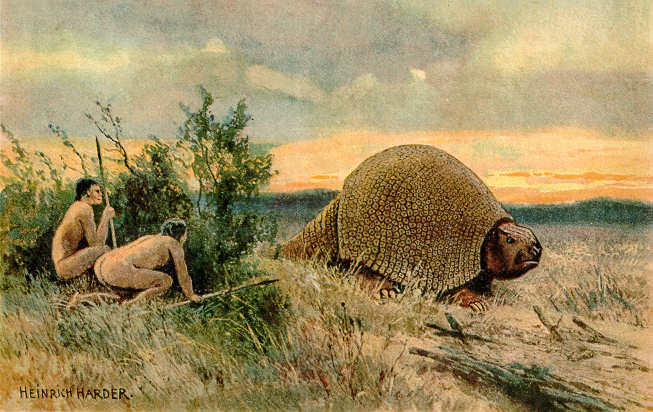
Hurray, ancient DNA is back in the headlines. When the genome sequence of the mammoth was announced in November, I talked a bit about the possibility of using cloning to resurrect extinct creatures from their DNA, and suggested that the next genomes to be published in this area maybe those of the Neanderthal and the cave bear. Clearly inspired by the same thought, New Scientist has a light-hearted feature this week listing its top ten candidates, apart from the mammoth, for species to be brought back to life.
The main issue is preservation of the DNA. This means dinosaurs are out, because they are too old - no genetic information is likely to survive for more than a million years. So ideal candidates would have lived less than 100,000 years ago, and there will be specimens preserved in permafrost. It's also helpful to have a closely-related species alive today, that can provide eggs for the cloning process, and serve as a surrogate mother. Finally, New Scientist based its selection on a made-up measure called "megafaunal charisma" (how exciting the prospect of resurrecting these animals is) which basically means it chose the candidates it thought would be most interesting to write about.
Here is the top 10, in no particular order:
Sabre-toothed tiger
Neanderthal
Short-faced bear
Tasmanian tiger
Glyptodon (a giant armadillo the size of a Volkswagen Beetle)
Dodo
Woolly rhinoceros
Giant ground sloth
Moa
Irish elk
Gorilla (not extinct yet but could be soon)
Out of those, my favourite has got to be the Glyptodon (pictured), although the lack of a suitable living surrogate (today's armadillos aren't going to be able to carry one of those to term) would be a huge challenge. In fact the hurdles for resurrecting any of these species are still enormous, but then the science is progressing dizzyingly fast. Just 55 years ago when the structure of DNA was discovered, the idea of sequencing an entire genome in just a few months, for example, or of cloning a new individual from an adult cell, would have seemed impossible. So who knows what will be doable in the next 50 years.
Of course the ethical issues surrounding bringing back any of these species, especially the Neanderthal, are much harder to dismiss. If they wouldn't have anywhere to live - the reason many of these animals went extinct in the first place - what's the point? But then as New Scientist says, "let's not spoil the fun". Car-sized armadillos would certainly give a trip to the New Forest a whole new edge.
So what would you bring back, and why?